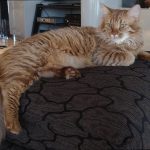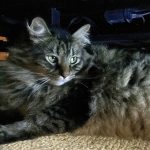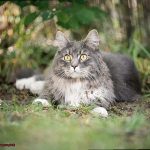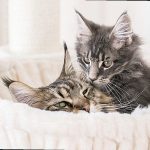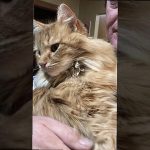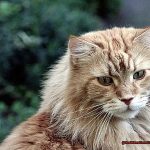Have you ever wondered why your majestic feline friend is so attached to you? Well, you’re not alone.
Many Maine Coon owners find themselves pondering this question. These gentle giants are known for their affectionate and loving nature, but sometimes their need for constant companionship can be overwhelming.
In this post, we’ll delve into the various reasons behind their clinginess, shedding light on what makes them crave your attention 24/Whether you’re already a proud Maine Coon owner or considering adding one to your family, understanding the root causes of their clingy behavior will undoubtedly strengthen the bond between you and your fluffy companion.
So, let’s embark on this journey together and discover why these magnificent creatures can’t get enough of your love and attention.
Why is my Maine Coon so clingy
Maine Coon cats are known for their affectionate and loving nature, but some individuals may exhibit clingy behavior more than others. If you’ve ever wondered why your Maine Coon is so attached to you, this blog post will delve into the possible reasons behind their clinginess. By understanding the underlying factors, you can address the issue effectively and create a harmonious bond with your feline companion.
Breed Traits:
Maine Coons have a reputation for being sociable and loving creatures. Their clinginess may simply be a result of their innate need for social interaction and attention. They are often referred to as “gentle giants” due to their large size and gentle demeanor.
Separation Anxiety:
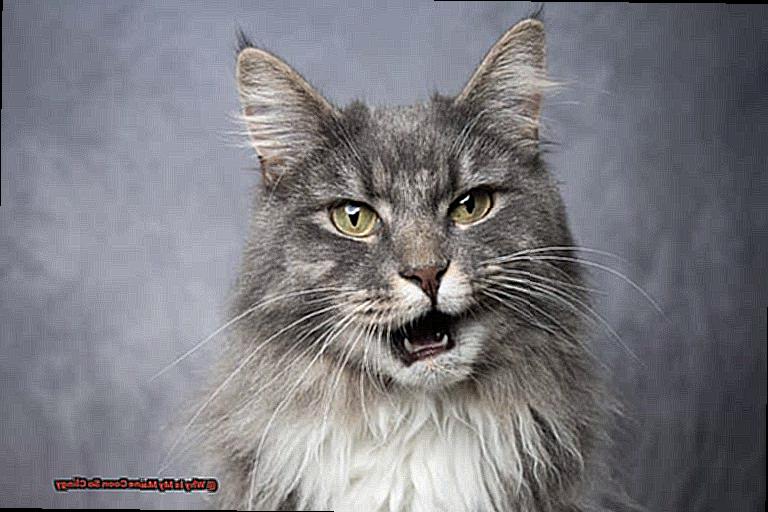
Just like humans, cats can experience separation anxiety. Maine Coons, in particular, are prone to this condition due to their strong attachment to their owners. When left alone for extended periods, they may display clingy behavior as a way to seek comfort and reassurance.
Loneliness:
Maine Coons thrive on social interaction and can feel lonely if left alone for long periods. They may become clingy as a way to express their need for companionship. Providing them with ample playtime, interactive toys, and even considering getting them a feline companion can help alleviate their feelings of loneliness.
Health Issues:
Sometimes, clinginess in Maine Coons can be attributed to underlying health issues. Cats may seek extra attention and comfort when they are feeling unwell or in pain. If your Maine Coon’s clinginess is accompanied by other signs of illness, such as changes in appetite or litter box habits, it is important to consult a veterinarian for a thorough examination.
Environmental Changes:
Maine Coons are sensitive creatures who can be affected by changes in their environment. Moving to a new home, the addition of new family members or pets, or even rearranging furniture can disrupt their sense of security and trigger clingy behavior. Providing them with a safe and comfortable space, consistency in routine, and gradual introductions to new changes can help alleviate their clinginess.
Breed Characteristics: Why Are Maine Coons Prone to Clinginess?
Maine Coons, with their majestic appearance and friendly demeanor, have become one of the most beloved cat breeds. However, their tendency towards clinginess can sometimes puzzle their owners. In this article, we will delve into the breed characteristics that make Maine Coons prone to clinginess and explore the fascinating reasons behind their affectionate nature.
Historical Background:
Maine Coons have a rich history as working cats on farms and ships. They were relied upon for hunting vermin, and their survival often depended on forming strong bonds with humans. This historical role has ingrained in them a deep desire to be around their human companions, leading to their clingy behavior.
Highly Intelligent and Sociable:
Maine Coons are renowned for their intelligence and sociability. They possess an extraordinary ability to understand and bond with their owners, seeking constant interaction and attention. Their clinginess is rooted in their innate need for social stimulation, which can be traced back to their working cat heritage.
Affectionate Temperament:
Maine Coons have a gentle and affectionate temperament that sets them apart from other cat breeds. Their loving nature makes them more prone to seeking out human company and forming close attachments. They crave physical contact and enjoy being petted or held, which can manifest as clingy behavior.
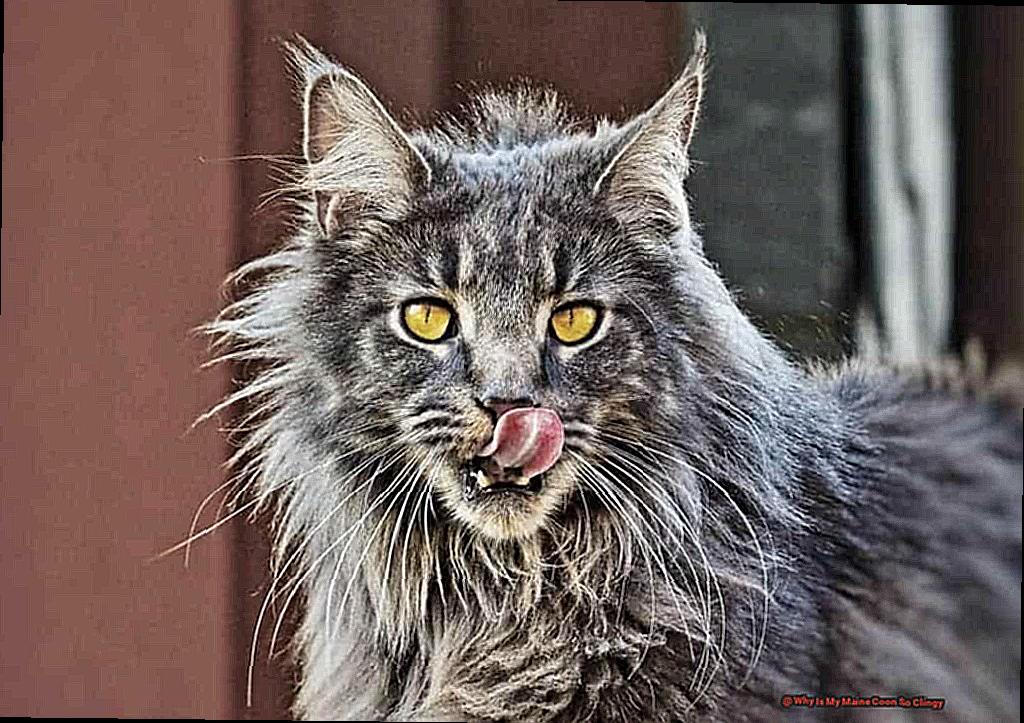
Energy Levels:
Maine Coons are highly energetic cats that require ample mental and physical stimulation. If they don’t receive enough attention or playtime, they may become clingy as a way of seeking engagement from their owners. Regular exercise sessions and interactive toys can help channel their energy productively and reduce clinginess.
Vocal Communication:
Maine Coons are known for their vocal nature, often using meows, chirps, and trills to communicate with their owners. This vocalization serves as a form of bonding and seeking attention, further contributing to their clingy behavior. Understanding their communication style can help strengthen the bond between cat and owner.
Socialization: How Does Kitten Development Affect Clinginess?
Kittens are adorable little fluffballs that bring joy and laughter into our lives. But did you know that the way a kitten is socialized during their early development can have a big impact on their clinginess as adults? In this section, we’ll dive into the fascinating world of kitten development and explore how it affects clinginess in our beloved Maine Coons.
The Critical Period of Socialization
During the first few weeks of life, kittens go through a critical period of socialization. This is when they learn how to interact with other cats and humans, and develop important social skills. Just like humans, these early experiences shape their behavior as adults.
Proper Socialization is Key
Maine Coon kittens who receive proper socialization are more likely to grow up to be confident, independent cats. They’re less likely to exhibit clingy behavior and are better equipped to handle new situations.
So, what does proper socialization look like for a Maine Coon kitten? Here’s a handy checklist:
- Exposure to Different Environments: Take your kitten on adventures. Introduce them to different rooms in your house, let them explore the great outdoors (safely, of course), and even take them for car rides (if they’re up for it).
- Meeting New People: Invite friends and family over to meet your kitten. Encourage gentle interactions and positive experiences with different individuals.
- Playdates with Other Cats: Arrange playdates with other friendly cats or kittens. This helps your Maine Coon learn appropriate social behaviors and build confidence.
- Positive Experiences: Make sure all interactions during this critical period are positive. Gentle handling, play sessions, and rewards can help your kitten develop trust and confidence.
The Impact of Early Separation
Early separation from the mother cat or littermates can contribute to clinginess in Maine Coons. Kittens who are taken away too soon may struggle with attachment issues and seek constant comfort from their owners. So, if you’re adopting a Maine Coon kitten, make sure they are at least 12 weeks old before bringing them home.
Preventing Clinginess in Adulthood
To prevent clinginess in your Maine Coon, prioritize socialization efforts during the kitten stage. Gradually expose them to new people, places, and situations. This helps them learn that the world is a safe and predictable place, reducing the likelihood of clingy behavior.
Separation Anxiety: Is My Maine Coon Suffering From Anxiety?
It could be a case of separation anxiety. But before you jump to conclusions, it’s important to differentiate between separation anxiety and normal feline behavior. Here are some tips to help you figure it out:
- Signs of Separation Anxiety: Excessive vocalization, destructive behavior, excessive grooming, urinating or defecating outside the litter box, and loss of appetite are common signs of separation anxiety in Maine Coons. If you notice these behaviors consistently when you’re not at home, it could be a red flag.
- Understanding Maine Coon Behavior: Maine Coons are highly intelligent and social animals that form strong bonds with their owners. Some cats may naturally crave more attention and become anxious when left alone, while others may be more independent and prefer solitude. Knowing your cat’s natural temperament will help you determine if their behavior is within the normal range.
- Consult a Veterinarian: If you suspect separation anxiety, it’s important to consult with a veterinarian to rule out any underlying medical conditions that may be contributing to the behavior. They can also provide guidance on the best course of action.
- Alleviating Separation Anxiety: There are several strategies that can help alleviate separation anxiety in Maine Coons. Creating a safe and stimulating environment, gradually desensitizing your cat to periods of alone time, providing interactive toys and puzzles, and exploring the use of pheromone diffusers or calming supplements can all make a difference.
- Be Patient and Understanding: Remember, every Maine Coon is unique, and what works for one cat may not work for another. It’s important to be patient and understanding while working with your Maine Coon to address their separation anxiety.
Attention-Seeking Behavior: Is My Cat Trying to Get Attention?
Let’s dive into the world of attention-seeking behavior in cats and explore why they do it and how you can address it.
Why Do Cats Seek Attention?
Cats may exhibit attention-seeking behavior for various reasons. Here are a few common ones:
- Boredom: Cats are intelligent beings that need mental and physical stimulation. If they’re not adequately entertained or don’t have enough environmental enrichment, they may resort to attention-seeking behaviors to alleviate their boredom.
- Loneliness: Cats are social animals that can form strong bonds with their owners. If they spend long periods alone or don’t receive enough interaction, they may seek attention to fulfill their social needs.
- Insecurity: Some cats may have underlying insecurities or anxiety issues that drive them to seek constant reassurance and attention from their owners.
- Learned behavior: Cats are smart and quickly learn which behaviors get a response from their owners. If a cat realizes that certain attention-seeking behaviors result in getting what they want (such as food, playtime, or affection), they may continue to engage in those behaviors.
Addressing Attention-Seeking Behavior
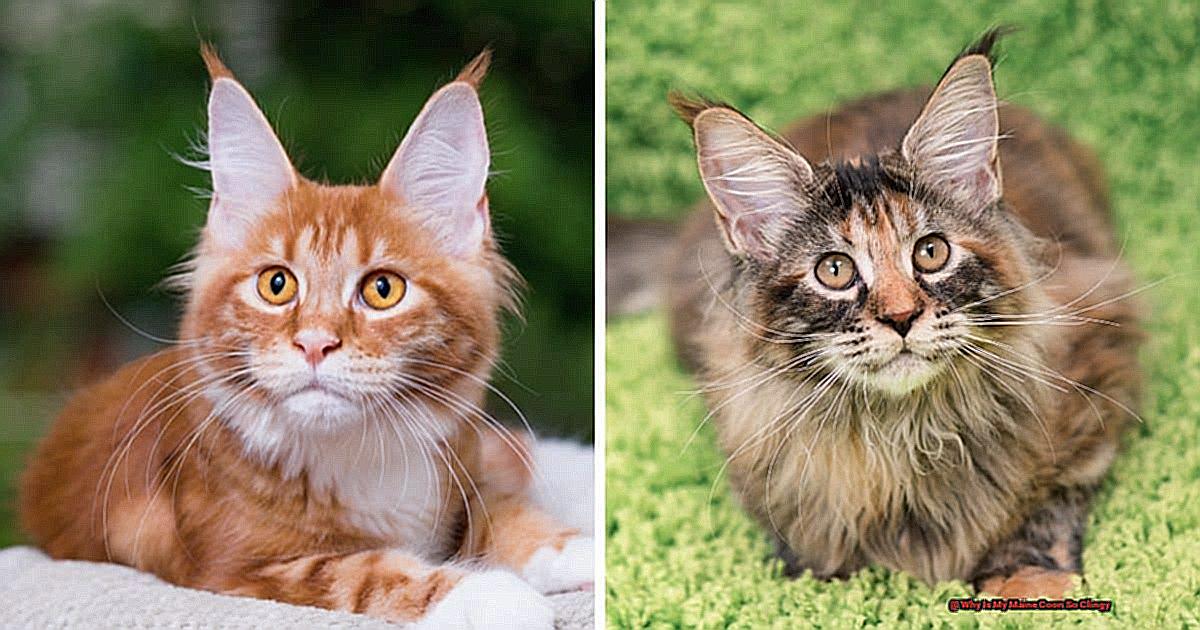
Now that we understand why cats seek attention, let’s explore how you can address it:
- Provide an enriching environment: Make sure your cat has plenty of toys, scratching posts, and interactive playtime sessions to keep them mentally stimulated and physically active. This can reduce their need for attention-seeking behaviors.
- Establish a routine: Cats thrive on predictability, so try to establish a consistent daily routine for feeding, playtime, and interaction. This can help alleviate feelings of loneliness or insecurity.
- Positive reinforcement training: Use positive reinforcement to reward desired behaviors and ignore or redirect unwanted attention-seeking behaviors. This helps your cat learn alternative ways to seek attention.
- Consult with a professional: If attention-seeking behavior becomes excessive or problematic, consider consulting with a veterinarian or animal behaviorist for further evaluation and guidance. They can help determine if there are any underlying medical conditions or provide specific strategies tailored to your cat’s needs.
Remember, attention-seeking behavior in cats is not always a negative thing. Cats are social animals that need mental stimulation and social interaction to thrive. However, excessive attention-seeking behavior can become bothersome or disruptive. By understanding why your cat seeks attention and implementing appropriate strategies, you can create a harmonious environment where both you and your furry friend can coexist happily.
Health Issues: Could There Be an Underlying Health Problem?
Maine Coons are known for their friendly and affectionate nature, but excessive clinginess in these cats could be a sign of an underlying health issue. As a cat owner, it’s crucial to consider health problems as a potential cause for clingy behavior, as cats are skilled at hiding signs of illness or discomfort.
Hyperthyroidism:
One possible health issue that can contribute to clinginess in Maine Coons is hyperthyroidism. This condition occurs when the thyroid gland produces an excess amount of thyroid hormone. Along with other symptoms such as weight loss and increased appetite, increased clinginess may be observed in affected cats.
Arthritis:
Maine Coons are prone to developing arthritis, especially as they age. This condition can cause pain and discomfort, leading the cat to seek more physical contact and reassurance from their owners. If your Maine Coon is exhibiting clingy behavior, observe if they show signs of stiffness or reluctance to jump.
Infection or inflammation:
Increased clinginess can also be a result of a cat feeling unwell due to an infection or inflammation. Keep an eye out for accompanying symptoms such as changes in appetite, lethargy, or unusual bathroom habits. If you notice these signs along with clingy behavior, it’s important to consult with a veterinarian for proper diagnosis and treatment.
Natural sociability:
While Maine Coons are naturally sociable cats and enjoy being close to their owners, sudden or excessive clinginess compared to their usual behavior should be taken into consideration. If there is a significant change in their clingy behavior, it may indicate an underlying health problem.
Conclusion:
If your Maine Coon is exhibiting clingy behavior, it is advisable to consult with a veterinarian. They can perform a thorough examination and run necessary tests to determine if there are any underlying health problems contributing to the clinginess. Once a health issue has been identified and treated, the cat’s clingy behavior should improve. Remember to continue providing love and attention to your Maine Coon even after recovery to ensure their emotional well-being.
Strategies for Managing Clinginess: How Can I Help My Maine Coon?
While it’s natural for these affectionate feline friends to seek closeness, excessive clinginess may indicate underlying issues. In this blog post, we’ll explore strategies to manage and address clinginess in Maine Coons to ensure their well-being and your peace of mind.
Provide Mental and Physical Stimulation:
Maine Coons are intelligent and active cats, so engaging their minds and bodies is essential. Incorporate daily playtime sessions using interactive toys or laser pointers to satisfy their hunting instincts. Puzzle feeders can also keep them mentally stimulated while providing a rewarding challenge.
Create a Safe and Comfortable Environment:
Clinginess can stem from anxiety or insecurity. Ensure your Maine Coon has their own space with hiding spots, cozy beds, and vertical spaces like cat trees. These areas offer security and a sense of ownership, reducing the need for constant attachment.
Establish a Routine:
Maine Coons thrive on predictability, so establish daily routines for feeding, playtime, and quiet time. Consistency helps them feel secure and reduces anxiety-driven clinginess.
Set Boundaries:
While it’s tempting to constantly shower your Maine Coon with affection, setting boundaries is crucial. Gradually increase the time between attention sessions to encourage independence. Reward calm behavior and ignore clingy behavior to reinforce desired habits.
Positive Reinforcement Training:
Using positive reinforcement techniques can be effective in managing clinginess. Reward your Maine Coon when they exhibit independent behavior or use clicker training for more advanced tasks. This encourages self-reliance and reduces clinginess over time.
Consult with Professionals:
If your Maine Coon’s clinginess becomes excessive or distressing for both of you, don’t hesitate to seek help from a veterinarian or animal behaviorist. They can provide personalized strategies and guidance based on your cat’s specific needs.
Enrichment Activities: How Can I Keep My Cat Engaged and Entertained?
Maine Coon cats are known for their clinginess and need for constant attention. To keep your Maine Coon engaged and entertained, it’s important to provide them with a variety of enrichment activities.
These activities not only stimulate their minds but also keep them physically active, preventing boredom and potential behavior problems. Here are some expert tips to keep your Maine Coon entertained and happy:
- Interactive Toys: Maine Coons have a strong hunting instinct, so providing them with interactive toys is a great way to engage their natural behaviors. Toys with feathers, strings, or small balls that can be batted around are particularly appealing to Maine Coons. Puzzle toys that require your cat to figure out how to extract treats or toys from them also provide mental stimulation and keep your cat entertained for hours.
- Stimulating Environment: Creating a stimulating environment is essential for keeping your Maine Coon engaged. Consider setting up a “catio,” an enclosed outdoor space where your cat can safely explore nature. Fill it with climbing structures, perches, and hiding spots to make it even more enticing. If you don’t have access to a catio, create a stimulating indoor environment by providing multiple scratching posts, vertical climbing structures, and cozy hiding places.
- Regular Playtime: Dedicate at least two play sessions each day for your Maine Coon. Use interactive toys such as feather wands or laser pointers to engage your cat in active play. Allow them to chase and pounce on the toy, satisfying their hunting instincts and providing exercise.
- Puzzle Feeders: Instead of simply providing food in a bowl, introduce puzzle feeders or treat-dispensing toys during mealtime. These interactive feeders make your cat work for their meal, stimulating their problem-solving skills and providing mental stimulation.
- Environmental Enrichment: Provide different textures and surfaces for your Maine Coon to explore. Place bird feeders outside the window to give them something interesting to watch. Introduce cat-friendly plants like catnip or cat grass, which not only provide sensory stimulation but also help with digestion.
Establish a Routine: How Can I Provide Structure and Security for My Cat?
Cats, including Maine Coons, are creatures of habit, and having a consistent daily routine can significantly reduce anxiety and create a sense of security for your feline friend.
So, how can you establish a routine that will make your Maine Coon feel safe and content? Let’s dive in:
Regular Feeding Times:
Cats thrive on routine, so try to feed your Maine Coon at the same time every day. This will help establish a sense of predictability and create a feeling of security for your clingy cat. Consider using an automatic feeder if you have a busy schedule to ensure consistent meal times.
Playtime and Exercise:
Maine Coons are active and playful cats, so providing regular opportunities for physical and mental stimulation is essential. Dedicate specific times each day to engage in interactive play sessions with your Maine Coon. Use toys that mimic prey-like movements, such as feather wands or laser pointers, to engage their natural hunting instincts. This will not only keep them occupied but also provide them with essential exercise.
Creating a Comfortable Environment:
A comfortable and secure environment is another crucial aspect of establishing a routine for your clingy Maine Coon. Provide hiding places, like cat trees or cardboard boxes, where your cat can retreat to when they need some alone time. Additionally, make sure your Maine Coon has access to a quiet and cozy sleeping area where they can rest undisturbed. This will help them feel safe and secure throughout the day.
Regular Grooming Sessions:
Maine Coons have thick fur that requires regular brushing to prevent matting and maintain their coat’s health. By incorporating grooming into their routine, you not only keep them looking their best but also provide them with focused attention and care. This can further strengthen the bond between you and your cat.
Consistent Behavior:
Be consistent with your own behavior towards your Maine Coon. Cats are highly perceptive creatures, and any changes in your behavior or mood can affect their sense of security. Maintain a calm and predictable demeanor around your cat to help them feel at ease.
Create Safe Spaces: What Kind of Hiding Spots Should I Provide for My Cat?
Cats are curious creatures who often seek out safe and secure hiding spots to retreat to when they feel stressed or overwhelmed. Providing appropriate hiding spots for your cat can help them feel more comfortable and relaxed in their environment. In this article, we will explore various types of hiding spots that cats love and how to ensure they are secure.
Covered Beds and Blanket Forts:
- Place a cozy blanket over a chair or create a small tent-like structure with blankets and pillows.
- Cats are naturally drawn to small, enclosed spaces, and a covered bed or blanket fort can provide them with a sense of security.
Cat Caves and Tunnels:
- Purchase ready-made cat caves or tunnels from pet stores, or create DIY versions using cardboard boxes or PVC pipes.
- Cats love exploring and hiding in tunnels, which can provide both entertainment and security.
Elevated Hiding Spots:
- Install shelves or invest in a cat tree that offers different levels for your cat to hide on.
- Cats feel safer when they are up high, as it gives them a vantage point to observe their surroundings.
Observing Your Cat’s Preferences:
- Each cat is unique, so pay attention to your cat’s behavior and preferences.
- Some cats may prefer dark and enclosed spaces, while others may prefer open and elevated areas.
Safety Tips:
- Avoid using materials that could be harmful if chewed on or ingested, such as toxic paints or fabrics.
- Regularly inspect the hiding spots for any potential hazards, like loose threads or sharp edges.
Gradual Separation Training: How Can I Help Ease My Cat’s Anxiety Around Separation?
Gradual separation training is an effective technique that can help ease your cat’s anxiety around being separated from you. In this article, we will explore the benefits of gradual separation training and provide practical tips for implementing this training method.
Why do Cats Experience Separation Anxiety?
Cats, including Maine Coons, can become clingy due to various reasons, such as fear, insecurity, or a lack of stimulation. They form strong bonds with their owners and may experience stress and anxiety when separated. Understanding this underlying need for social interaction is crucial in helping your cat overcome separation anxiety.
Benefits of Gradual Separation Training:
Gradual separation training involves slowly increasing the time your cat spends alone, starting with short periods and gradually extending them over time. This approach has several benefits:
- Builds Confidence: By gradually exposing your cat to longer periods of alone time, they learn that being by themselves is not something to fear. This helps build their confidence and reduces clingy behavior.
- Reduces Stress: Cats thrive on routine and predictability. Gradual separation training provides a structured environment that helps alleviate stress and anxiety associated with sudden separations.
- Promotes Independence: Teaching your cat to be comfortable alone encourages them to engage in independent activities, such as exploring their surroundings or playing with toys.
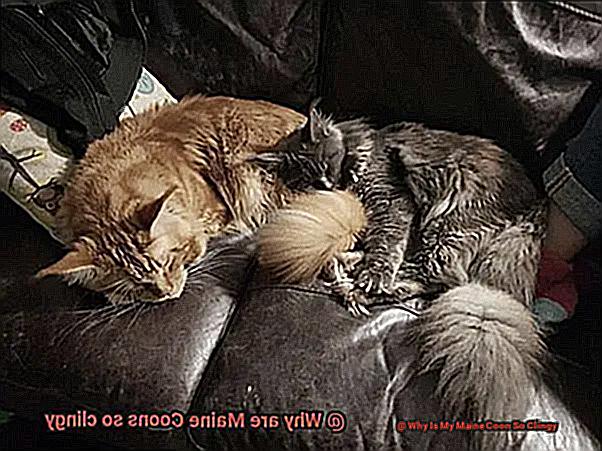
Implementing Gradual Separation Training:
To start gradual separation training, create a safe and comfortable space for your cat where they can retreat when you’re not around. Follow these steps:
- Short Absences: Begin by leaving your cat alone for just a few minutes at a time. Ensure they have access to food, water, toys, and a cozy bed or hiding spot. Gradually increase the duration of your absence over several days or weeks.
- Positive Reinforcement: Monitor your cat’s behavior during these periods of separation. If they remain calm and relaxed, offer praise, treats, or interactive play sessions as positive reinforcement.
- Step Back if Needed: If your cat shows signs of distress, such as excessive meowing or destructive behavior, it may be necessary to decrease the duration of your absences and take a step back in the training process.
Additional Strategies to Ease Clinginess:
In addition to gradual separation training, here are some strategies to help ease your Maine Coon’s clingy behavior:
Mental and Physical Stimulation: Provide plenty of mental and physical stimulation through interactive toys, puzzle feeders, and regular play sessions. Engaging their minds and bodies can help redirect their focus from separation anxiety.
Also Read: A List Of Maine Coon Breeders In The Us By State
Conclusion
It’s not uncommon for Maine Coons to be clingy.
They are known for their affectionate and social nature. Your Maine Coon may be clingy because they have formed a strong bond with you and see you as their source of comfort and security.
They may also be seeking attention or reassurance from you. Additionally, some Maine Coons have a predisposition towards being more dependent on their human companions.
It’s important to understand that this behavior is normal for the breed and shouldn’t be seen as a negative trait.
